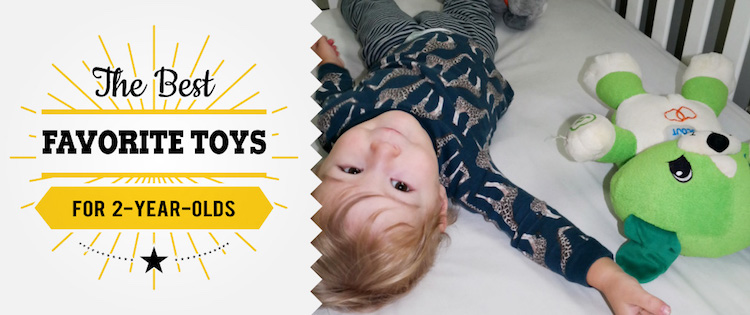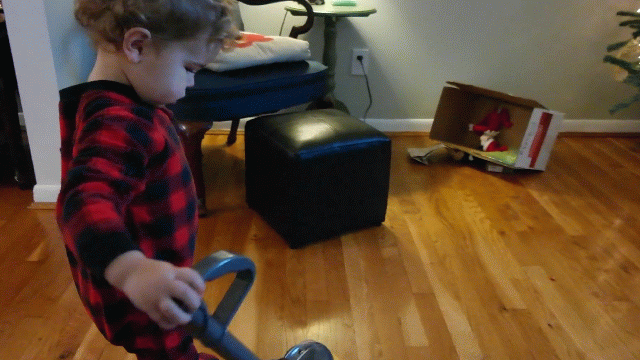Last Updated on November 20, 2020 by admin
My son has hated sleeping from the day he was born, when we both cried streams of exhausted tears in the hospital room for hours.
As he entered toddlerhood, my #1 priority each morning was to exhaust him physically. Otherwise, his chances of an afternoon nap would be nil.
Then, when his defiant phase started around 2 and a half, bedtime struggles often became what could only be described as “epic.”
If you’re a fellow parent of a sleep-hating toddler, you might be sick of hearing everyone’s proven tactics.
It’s annoying to read all the sleep books and blogs and continue to #sleepfail. It’s also nearly impossible to completely arrange your life around the all-hailed sleep routine that’s supposed to solve everything.
However, hear me out: The most helpful tool in my naptime arsenal when my son was 2 and 3 ended up being a popular $15 toy that you might already have.
It’s this bright green plush dog. Or this purple dog, if you prefer. (These images contain affiliate links.)
Meet “Scout” and “Violet”
Meet “Scout” and “Violet,” the ubiquitous, modern-day American teddy bears.
Scout came into our lives as a gift from my aunt for my son’s first birthday.
I went online and programmed Scout to say my son’s name, sing his favorite songs, and insert his favorite foods and colors into various phrases. Cute.
My son had an intermittent interest in Scout for a while. He was never very into stuffed animals, but he did love when Scout played “Jingle Bells,” which I had chosen from a long list of available songs.
However, the best feature on this toy, in my opinion, is the lullaby mode.
Hacking Lullaby Mode
When you squeeze Scout’s right foot, you choose an interval of “bedtime music.” Scout also announces what’s about to happen. “Five minutes of bedtime music! Goodnight, Ferdinand.*”
Well, one afternoon at naptime I had the bright stroke of insight to incorporate Scout’s lullaby mode into my nap strategy.
I recalled the Ferber method, in which you leave the child’s room briefly, then return to check in, then leave for longer and longer intervals until the child goes to sleep on his own.
I had tried this with my son when he was younger, and it had only resulted in louder and more panicked screaming with each interval until we were both traumatized. However, now he was older — and I had a soft, music-playing buddy to partner up with — I figured I’d try a variation.
I told my son he only had to stay in bed for two minutes of Scout’s bedtime music. I’d come back in when the music stopped.
It worked. I came back in. He was awake, but he had stayed in bed quietly.
I then upped the limit to 5 minutes of bedtime music. “Five minutes of bedtime music! Snuggle up, Ferdinand.*”
Success! With Some Caveats
My son liked the process, had more interest in the toy than he ever had before, and blessedly went to sleep during one of the 10 minute intervals.
The technique has worked pretty well on and off ever since. When it was more novel it was more effective. At some points he would even ask for a 10 minute intervals and get annoyed when I came back in before the music ended.
Here’s a big caveat, though: I must have an old version of this toy (purchased circa 2013) because our lullaby mode switches between 2, 5 and 10 minutes, but it looks like the newer model offers 5, 10 and 15 minutes.
It might not seem like a big deal, but I really relied on the super-short 2-minute interval to assure my kid that I would, indeed, come back reliably. It’s tough to get a 2-year-old to wait a whole 5 minutes alone in his room right away if he’s hell-bent on staying awake.
That said, there are probably other toys or even apps that you could use to do something similar. If you know of any, please let me know.
I still often use Scout’s lullaby mode now that my son is almost 4. I’ve never gone online to update his preferences, so Scout still thinks my son loves bananas.
Get a clue, Scout!
Just kidding, we love you.
*Not actually my son’s name. 😉 😉





